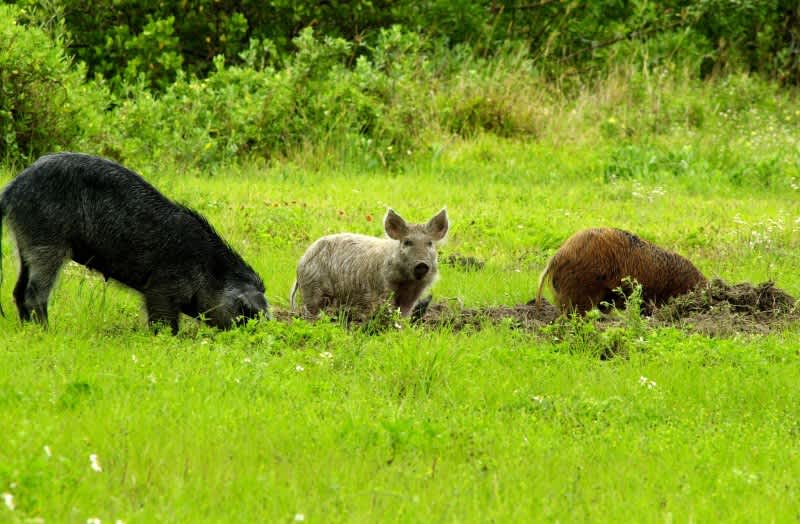Texas Losing Ground in Fight Against Feral Hogs
OutdoorHub Reporters 07.31.13

Texas has by far the nation’s largest population of feral pigs, and the ongoing battle to eradicate them is one that the state is losing. The Lone Star State is estimated to contain nearly half of all feral hogs in the United States, roughly 2.6 million. According to the Houston Chronicle, the swine have been carving a destructive path across 240 of Texas’ 254 counties. Despite killing over 700,000 of the animals every year, wildlife officials admit they are in a tough predicament.
“It’s just getting worse and worse; no matter what we’ve tried, the hogs just overwhelm us,” said Stuart Marcus, manger of the Trinity River National Wildlife Refuge. “They certainly are having a negative impact on native wildlife and habitat–directly and indirectly.”
The state’s hunters and trappers are doing their part to stem the tide. With almost no harvest restrictions, hog hunting has become a valued tradition in Texas and few other states can boast such a varied collection of pig recipes. From wild pig chili to mesquite-roasted pork, hog hunting can be a rewarding endeavor. This why every year hunters take an estimated 600,000 hogs and trappers account for another 70,000. Another 50,000 are killed by state wildlife services and private hog hunting companies. Still, it is not enough to halt the pigs’ growing population.
“The first year this agency began removing feral hogs was 1982, they took 86 pigs that year,” said Michael Bodenchuk, director of the U.S. Department of Agriculture’s Wildlife Services branch in Texas. “In 2011, we removed 24,746. That pretty much tells you how the problem has grown.”
In 2010 over 754,000 pigs were taken, but the number amounted to little more than 29 percent of the population. A Texas A&M University study found that in order to halt the spread of the invasive species, nearly 66 percent of the state’s feral hog population would have to be culled every year. The Houston Chronicle reports that this estimate is now an even 70 percent.
“Right now we’re not even taking half that number,” Bodenchuk said.
The very traits that make the pigs so adaptable in the wild are also the ones that draw the ire of Texan farmers and conservationists. Feral hogs eat whatever they can find, including roots, bird eggs, turtles, and crops. They have an exceptional taste for corn, rice, soybeans, and sweet fruits like watermelon. Crops in an area that hogs have targeted that the animals do not eat are often trampled–every year feral hogs cause $50 million in damage to the state’s agriculture. It has led farmers to turn to private firms that hunt and kill the hogs, but such measures are only a drop in the pond.
“There has been some success with reducing feral hog populations in fairly small areas,” said Donnie Frels, manager of the Kerr Wildlife Management Area. “But so far, we haven’t come up with any control mechanism that works for a long period of time over a large area.”
The hogs also compete with livestock and game animals for food, as well as posing a significant threat to the environment. Not only are the animals destructive but they also seem to encourage the growth of the equally invasive tallow trees. Another research study by Texas A&M found that tallow trees sprouted up wherever the pigs were because their rivals were eliminated by the hogs.
Researchers working at Kerr do have a plan to eradicate the wild swine, and it is one that has worked effectively elsewhere in the world. It is a poison called sodium nitrite and it is extremely toxic to hogs. The poison kills hogs by disabling their ability to pump blood to the brain. Luckily, humans and most other mammals have a built-in defense against the toxin that renders it harmless. Hogs killed by the poison should also be safe for scavengers to eat. When sodium nitrite was used in Australia, it helped to reduce pig populations by as much as 89 percent.
“It’s showing some promise,” Frels said. “But there’s still a long way to go before it could become an option.”
A sodium nitrite management program is currently in development but is restricted by federal regulations and the need for further testing.
You can read more on hog hunting or trapping tips here at the Texas Parks and Wildlife Department’s site.

